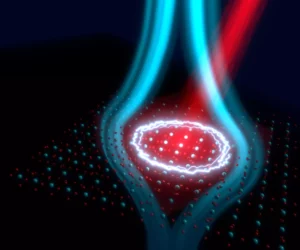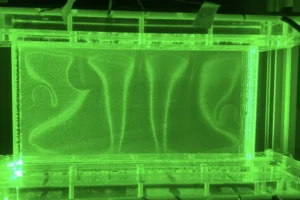The James Webb Space Telescope (JWST) has once again astounded the astronomical community with its latest revelation. This groundbreaking space observatory has pushed the boundaries of our understanding of the Universe’s infancy by detecting light from a galaxy, designated as MoM-z14, that formed just 280 million years after the Big Bang. This remarkable finding represents
In a groundbreaking study published in April 2023, scientists made a remarkable discovery that sheds light on the complex interplay between our sense of smell and cognitive health. Researchers have demonstrated that inhaling menthol can significantly improve cognitive abilities in mice affected by Alzheimer’s disease. This is not just a trivial find; it represents a
In recent years, social media has propelled various eccentric trends, each vying for our attention by testing our physical capabilities. From the viral challenge of rising from the floor without using hands to the more recent balance test of standing on one leg while brushing teeth, these activities claim to reveal our aging trajectory. However,
On Thursday, China made headlines with the launch of its pioneering space probe, Tianwen-2, marking an unprecedented mission aimed at retrieving samples from the near-Earth asteroid 2016HO3. This project not only exemplifies China’s increasing prowess in space exploration but also demonstrates its ambitious aspirations to unravel the mysteries of our Solar System and beyond. The
Superconductivity is often coined a ‘miracle’ of material science; it’s an extraordinary state where electrical resistance vanishes completely, enabling the unhindered flow of current. This remarkable property is typically observed at ultra-low temperatures, a challenging condition for practical applications. However, recent advances have ignited interest in a new territory – superconductivity at higher temperatures, specifically
Quality sleep serves as a cornerstone of health, particularly during adolescence – a formative period critical for brain development. While it is common knowledge that lack of sleep can lead to a range of negative consequences, recent studies illuminate the significant ways in which sleep quality directly impacts cognitive abilities in teenagers. The connection between
In recent years, air fryers have surged in popularity, becoming must-have kitchen appliances that promise convenient, healthy cooking. Social media is awash with visually enticing videos showcasing delectable meals made in mere minutes, which often mask the underlying science that lends air fryers their functionality. The reality, however, transcends mere convenience. At the core of
Recent revelations from a collaborative study led by the University of East Anglia and Plymouth Marine Laboratory have dramatically altered our understanding of the Southern Ocean’s capacity to absorb carbon dioxide (CO2). The research, which used direct measurement techniques, indicates that this vital ocean region is absorbing 25% more CO2 than previous estimates derived from
In the relentless battle against climate change, the quest for effective carbon emission reduction strategies has never been more critical. New advancements in carbon capture and storage technologies are reinvigorating this battle by harnessing natural processes that can swiftly transform carbon dioxide (CO2) into solid minerals. Researchers at the Pacific Northwest National Laboratory (PNNL) are
As the quest for a decarbonized future escalates, the energy landscape is undergoing unprecedented transformations. Power grid operators, including major entities like the UK’s National Grid, are faced with increasingly complex tasks, from planning grid expansions to orchestrating electricity production from diverse energy sources. The looming challenge? Achieving net-zero emissions while managing the intricacies of
In a remarkable turn of events, researchers from UC San Diego’s Scripps Institution of Oceanography have unveiled new insights into the nature of volcanic eruptions, particularly those triggered by the Fagradalsfjall Fires in Iceland. This research marks a pivotal shift in understanding how magma behaves beneath the Earth’s surface and challenges longstanding assumptions about volcanic
Despite the cosmic timeline of 13.7 billion years that speaks of stability, recent revelations suggest that our universe stands precariously close to a precipice of uncertainty. Central to this unsettling narrative is the Higgs boson, a fundamental particle whose instability might hold the key to the universe’s ultimate fate. My colleagues and I have recently













